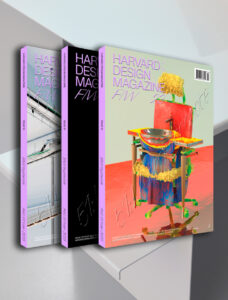Multihyphenation
Architecture, like any other profession, takes place within historical-economic conditions that far exceed its own agency and reach. The architect is constantly confronted not only with project budgets and local codes, but also—however indirectly, however unwantingly—with larger macroeconomic and regulatory conditions, entire “corporate cultures,” that permeate and influence all of cultural and aesthetic life. An architect may produce a design for a building, but the building’s construction—or even the initial impulse for a building, not to mention the availability of land it will occupy—is subject to local laws and government leaders and facilitated by a global financial system, dense networks of industry consultants, and a global supply chain that together source financial capital, expertise, technology, raw materials, and specialized building products and finishes from all over the world. The varied layers, scales, and reach of any one of these systems is inscrutably complex, and yet they are tenacious in prefiguring so much of what designers produce as culture. If an architect’s conception of their own practice has any hope of transcending a reactive reproduction of existing culture—if it hopes, in whatever subtle ways, to instigate difference within culture and within these systems—that practice must learn to not only navigate, but to some degree anticipate those seemingly inexorable forces that, if left uncontemplated, will happily determine every project, every situation.
Today, this means anticipating the dynamics of a curious and seemingly paradoxical feature of our neoliberal world that, to a large extent, defines contemporary life: namely, “vertical disintegration,” a corporate strategy characterized by high degrees of subcontracting and outsourcing of expertise and services, logistical analysis to identify and eradicate operational inefficiency, and temporary commitments to an organization’s own labor force and tangible resources like land, equipment, and buildings. Throughout the neoliberal period, a global shift toward vertical disintegration across corporate and firm structures has, remarkably, resulted in forms of market domination that now exceed even the vertically integrated dynasties of the Gilded Age. At the turn of the 20th century, for example, a figure like Andrew Carnegie, one of the richest people in the world at that time, had grown Carnegie Steel into a monopoly force by gaining control of coal and iron suppliers and their mines and operations, railroad lines, and other resources essential to the production and distribution of steel. Today, a century later, when the world’s largest taxi firm can claim that it owns no cars and employs no drivers, and the world’s largest vacation rental firm owns nearly no real estate, we can say we are truly in a new reality.
This trend toward “disintegrated consolidation” has arrived in the design fields somewhat later than in other sectors of the economy. If not so long ago there were many banks in the United States, now there are approximately four. If not so long ago there were many retailers, soon there might be just one. Design is one of many fields that are next. For the foreseeable future, architecture practices will have to continually strive to position themselves within this milieu, where “megafirms” are structured to compete in nearly every community for projects and commissions, including local and more idiosyncratic building projects that were once the very lifeblood of more experimental design practices.
One response to this condition, which has become apparent more quickly in fields adjacent to architecture in recent years (music, fashion, and cinema, for example) can be summed up as multihyphenation, a compound term that points to alternate landscapes of creative production: “Collab” culture; “brand X brand” projects; and multiple, or even opaque styles of attribution and ownership. For these practices, the “body of work” supersedes the desire for a singular creative identity. As Virgil Abloh—the consummate multihyphenate—remarked in a recent interview, “it’s explicitly the fact that I split my time among many things that gives me the point of view to know that what I’m doing is relevant.” Which is to say that one way of navigating a terrain dominated by monstrously large singularities is simply to become a multiplicity; architect-hyphen-curator-hyphen-art director-hyphen-furniture designer-hyphen-theorist-hyphen-fashion designer, etc., etc., ad infinitum.
Questions, however, linger. Is multihyphenation actually new? SUPERSTUDIO, Rem Koolhaas, Denise Scott Brown, the Eameses, Eileen Gray, even Le Corbusier (the list is endless)—weren’t they all, in some way or another, multihyphenates? Or is something different happening today? Perhaps the model itself is not entirely novel, but is taking on new relevance, precisely for its ability to expand the narrow bandwidths of design’s contemporary corporate landscape? Is multihyphenation simply another name for “total design?” Or something altogether different?
Or, taking these questions further, what could we say is becoming of singular authorship and attribution in a world saturated with sampling of existing and past culture: right-clicking and CTRL-C? Is multihyphenation a legitimate political response to present conditions, or does it always devolve into a cynical branding strategy? And crucially, is this model of practice allowing marginalized voices in the design fields to have more presence? If so, were there multihyphenates in the past who were overlooked in their own time, precisely for their supposedly marginal status?
We dedicate this issue to the late multihyphenates Virgil Abloh, Etel Adnan, Bruno Latour, and Issey Miyake, whose brilliance inspired this issue of Harvard Design Magazine and continues to inspire our own practices as well as generations of designers who, because of them, see the world differently.
